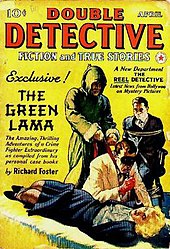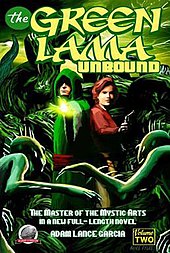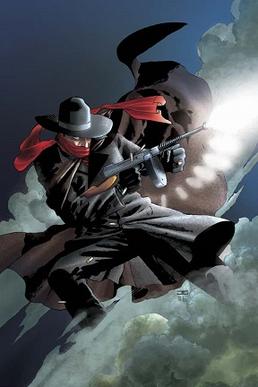
The Shadow is a fictional character published by magazine publishers Street & Smith and writer Walter B. Gibson. Originally created to be a mysterious radio show narrator, and developed into a distinct literary character in 1931 by writer Walter B. Gibson, The Shadow has been adapted into other forms of media, including American comic books, comic strips, serials, video games, and at least five feature films. The radio drama included episodes voiced by Orson Welles.
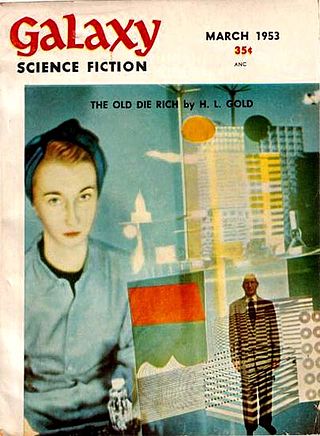
Horace Leonard Gold was an American science fiction writer and editor. Born in Canada, Gold moved to the United States at the age of two. He was most noted for bringing an innovative and fresh approach to science fiction while he was the editor of Galaxy Science Fiction, and also wrote briefly for DC Comics.
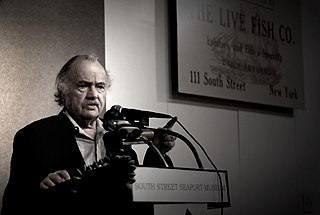
Ronald Joseph Goulart was an American popular culture historian and mystery, fantasy, and science fiction author.

Sheena, Queen of the Jungle, is a fictional American comic book jungle girl heroine, originally published primarily by Fiction House during the Golden Age of Comic Books. She was the first female comic book character with her own title, with her 1941 premiere issue preceding Wonder Woman #1. Sheena inspired a wealth of similar comic book jungle queens. She was predated in literature by Rima, the Jungle Girl, introduced in the 1904 William Henry Hudson novel Green Mansions.
Captain Action was an action figure created in 1966, equipped with a wardrobe of costumes and facial masks allowing him to become Superman, Batman, Spider-Man, Captain America, Aquaman, the Phantom, The Lone Ranger, Flash Gordon, Buck Rogers, Sgt. Fury, Steve Canyon, and the Green Hornet. Captain Action was the Ideal Toy Company's answer to Hasbro's G.I. Joe, although the protagonist dolls of both toy lines were created and designed by the same toy-and-idea man, Stan Weston. Captain Action also had a working 4 foot parachute.

Moonstone Books is an American comic book, graphic novel, and prose fiction publisher based in Chicago focused on pulp fiction comic books and prose anthologies as well as horror and western tales.
Kirk Jarvinen is an American artist / illustrator best known for his cartoon-style comic book art.
David Bishop, also D. V. Bishop, is a New Zealand comic book editor and writer of comics, novels and screenplays. In 1990s he ran the UK comics titles Judge Dredd Megazine (1991–2002) and 2000 AD (1995–2000).
Adam Warren is an American comic book writer and artist who is most famous for his original graphic novel Empowered, an adaptation of the characters known as Dirty Pair into an American comic book, and being one of the first American commercial illustrators to be influenced by the general manga style. He has also contributed to several Gen¹³ comics, worked as writer and character designer for the Marvel Comics series Livewires, and done numerous freelance works. His current project is Empowered, which he has been working on continuously since 2007.

Detectives Inc. is a series of two original graphic novels written by Don McGregor and published by Eclipse Enterprises in 1980 and 1985. The first, Detectives Inc.: A Remembrance of Threatening Green, featured black-and-white art by penciler-inker Marshall Rogers. The second, Detectives Inc.: A Terror Of Dying Dreams, was drawn by Gene Colan, and printed directly from his detailed pencils; a later comic-book reprinting added a sepia-tone wash in place of inking.
Spark Publications was a short-lived comic book publisher in the mid-1940s, during the Golden Age of Comic Books. The company was established and owned by Ken Crossen, who was the creator and writer of the Green Lama. Most of their comics was produced by a studio run by Jerry Robinson and Mort Meskin. Other creators who worked for Spark included Joseph Greene and Mac Raboy. The combination of Robinson, Meskin, and Raboy, using similar styles, gave Spark's books a sort of house style.
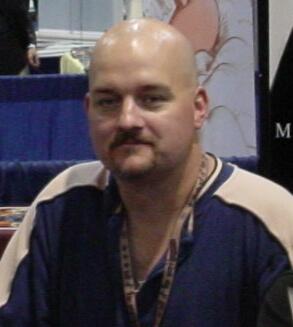
Mike Bullock is an American author and musician born in Washington, DC. Bullock began writing fiction, non-fiction and poetry in the 1980s. He worked professionally in the music and comic book industries since 1986 and is best known as the creator of comic book series Lions, Tigers and Bears from Image Comics, and as the regular writer of The Phantom from Moonstone Books.
Joe Gentile is an American author, editor and the founder of Moonstone Books, a Cleveland publishing house. He is also known as a comic book writer and author.

Project Superpowers is a comic book limited series published by Dynamite Entertainment beginning January 2008. It was co-plotted by Jim Krueger and Alex Ross, with scripts by Jim Krueger, covers by Alex Ross, and interior art by Doug Klauba and Stephen Sadowski for issue #0, and Carlos Paul for the remainder of the series. Ross is also art director, which includes sketched pages, color guides, and redesigns of most of the characters. There was a new series in 2018 with Rob Williams as the writers and Sergio Davila as the artist. A new series called Project Superpowers: Fractured States will debut in April with writers Ron Marz, Andy Lanning and artist Emilio Utrera. Another series called Scarlett Sisters with Women in Red, Lady Satan and Miss Masque is scheduled for September 2022.

The Domino Lady was a masked pulp heroine who first appeared in the May 1936 issue of Saucy Romantic Adventures.

Superhero fiction is a genre of speculative fiction examining the adventures, personalities and ethics of costumed crime fighters known as superheroes, who often possess superhuman powers and battle similarly powered criminals known as supervillains. The genre primarily falls between hard fantasy and soft science fiction spectrum of scientific realism. It is most commonly associated with American comic books, though it has expanded into other media through adaptations and original works.
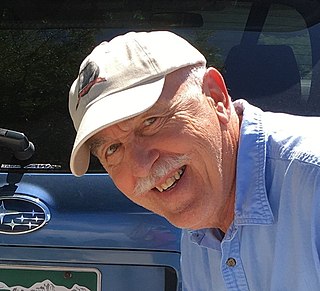
Ron Fortier is an American author, primarily known for his Green Hornet and The Terminator comic books and his revival of the pulp hero, Captain Hazzard. Early in his career he also wrote short stories and co-authored two novels for TSR.

There have been many comic book adaptations of the monster story created by Mary Shelley in her 1818 novel Frankenstein; or, The Modern Prometheus. Writer-artist Dick Briefer presented two loose adaptations of the story in publisher Prize Comics' successive series Prize Comics and Frankenstein from 1940 to 1954. The first version represents what comics historians call American comic books' first ongoing horror feature.

Kendell Foster Crossen was an American pulp fiction and science fiction writer. He was the creator and writer of stories about the Green Lama and the Milo March detective and spy novels.

